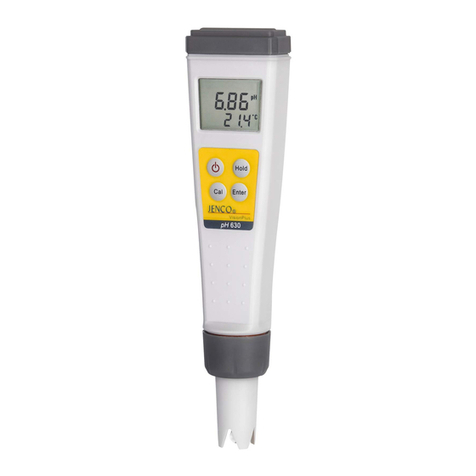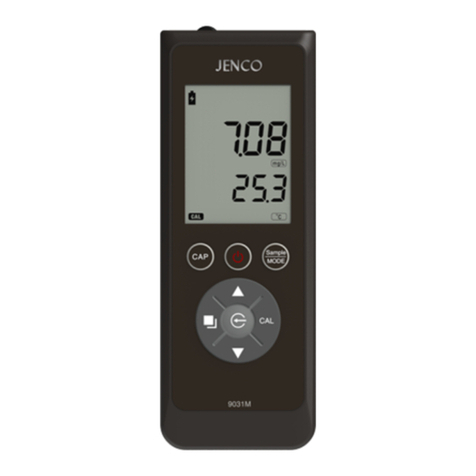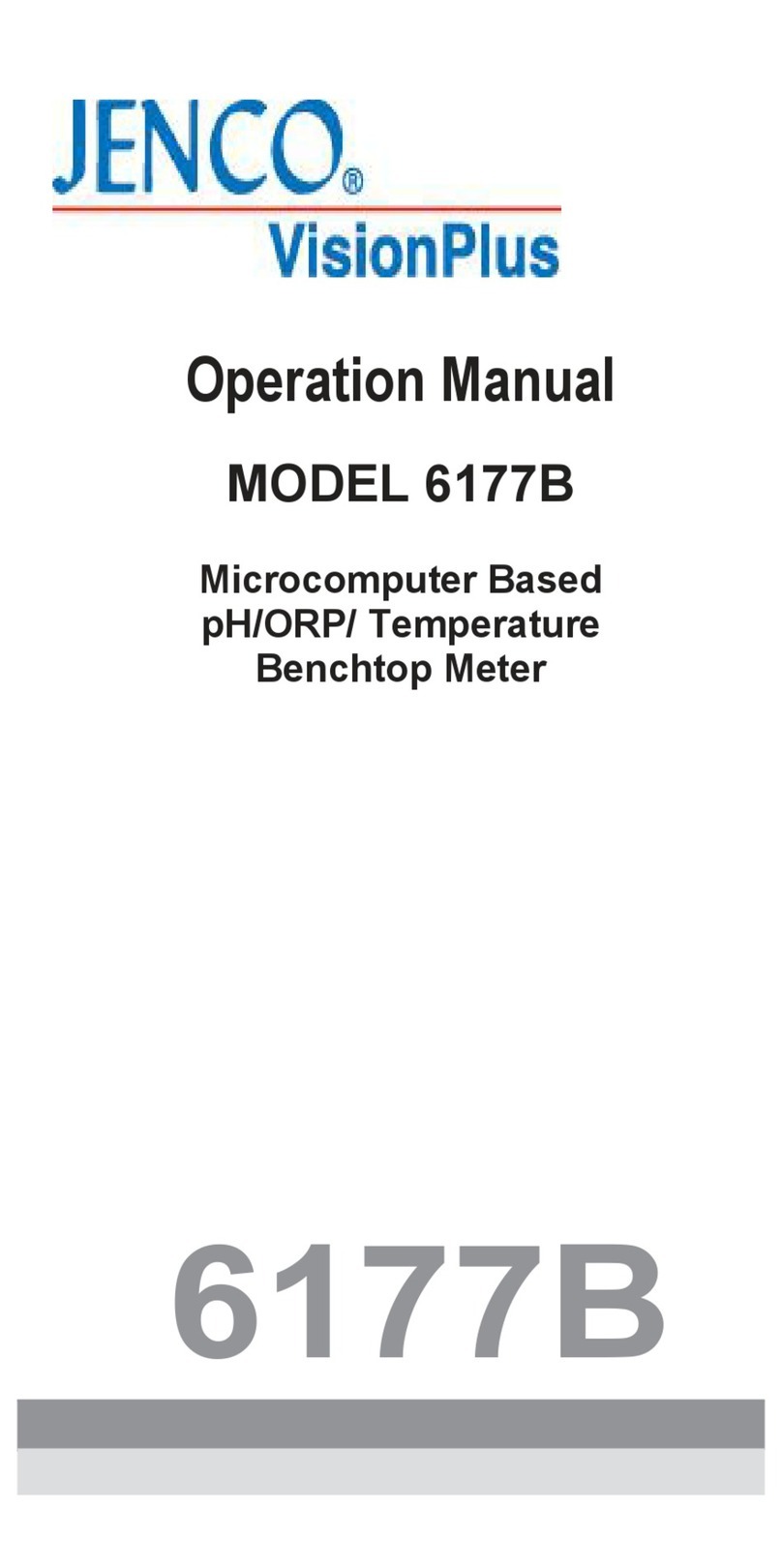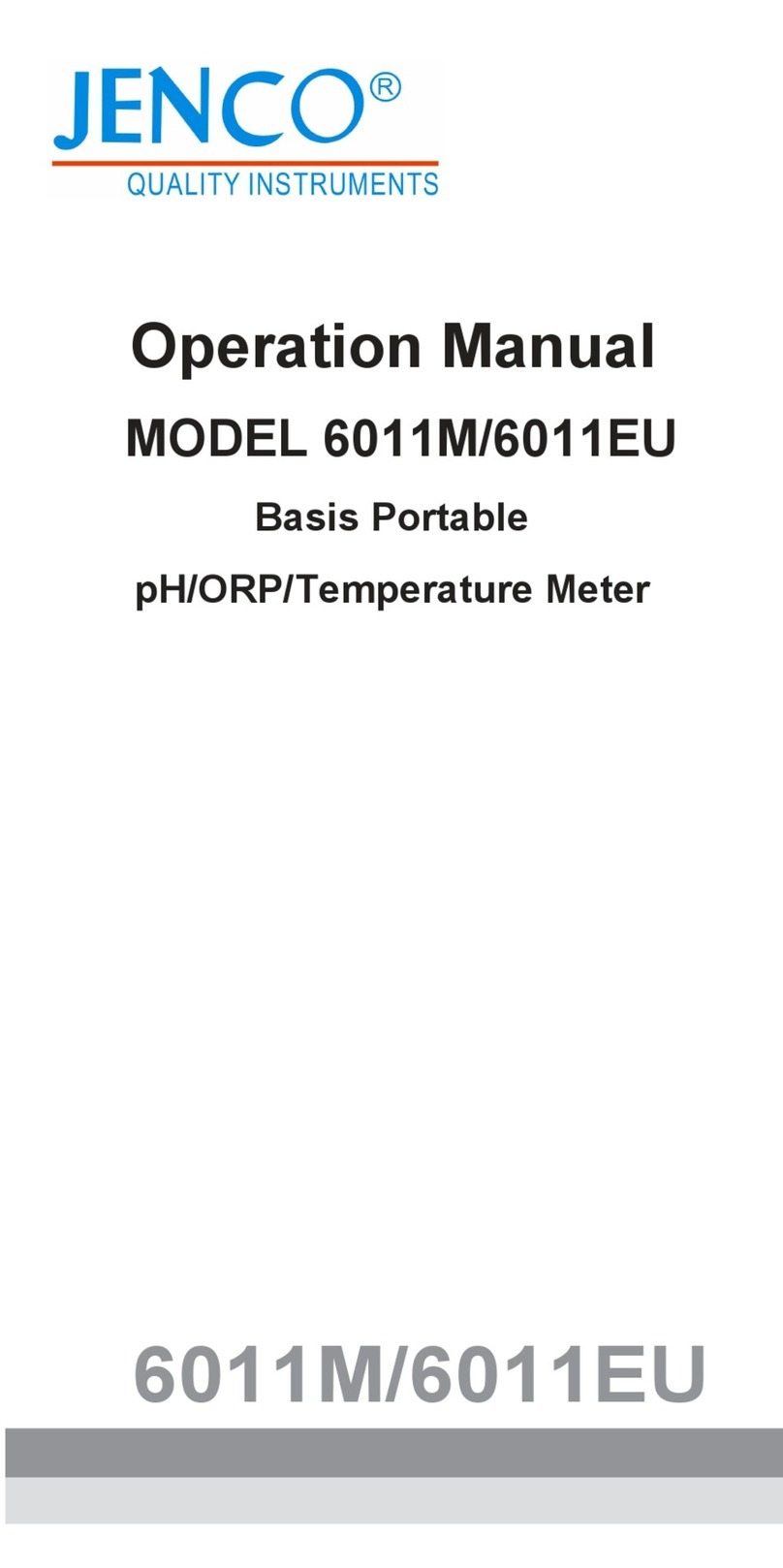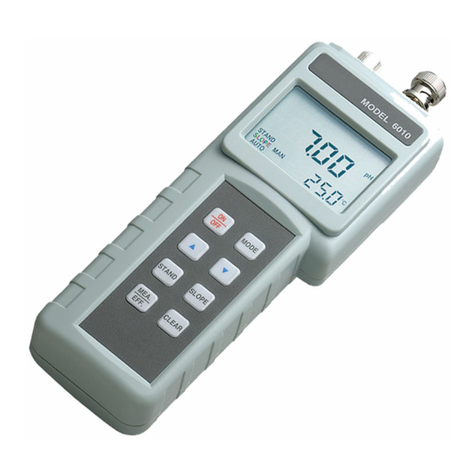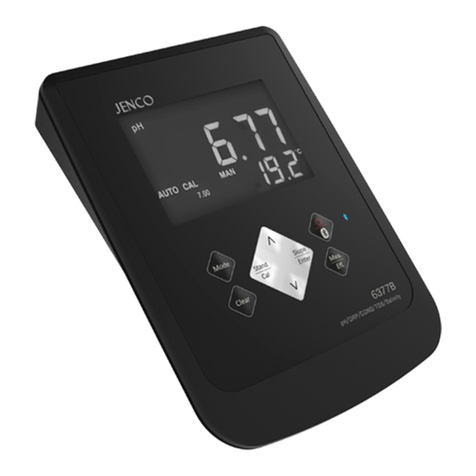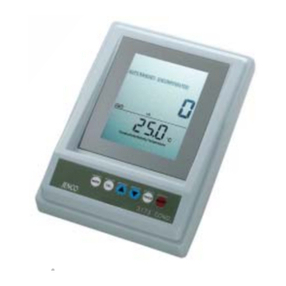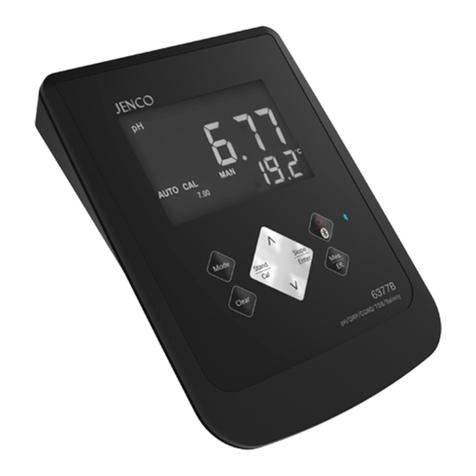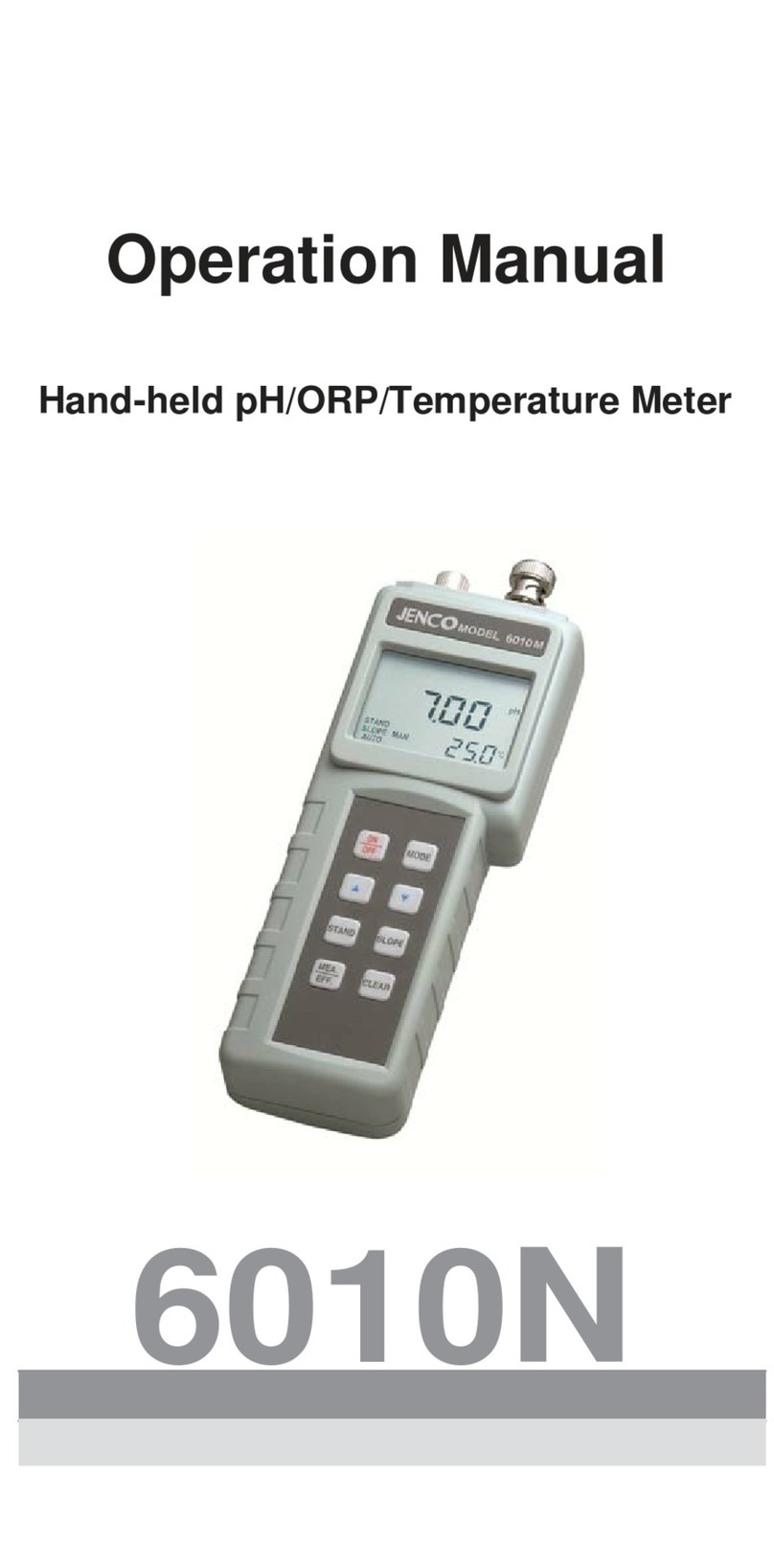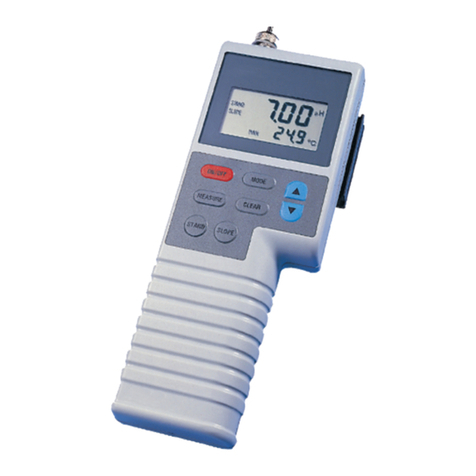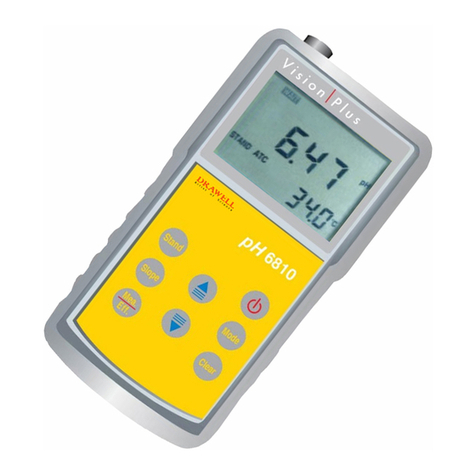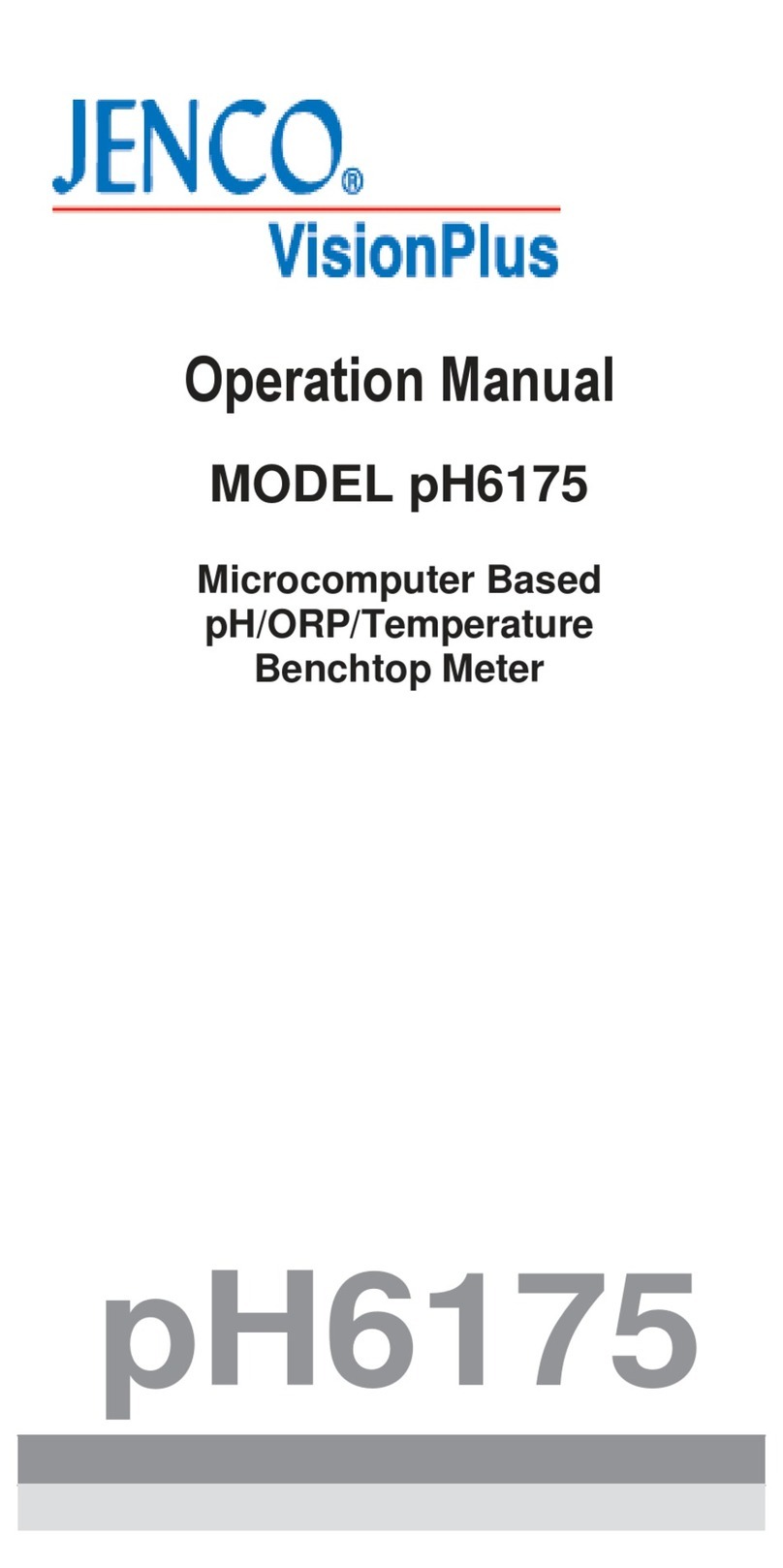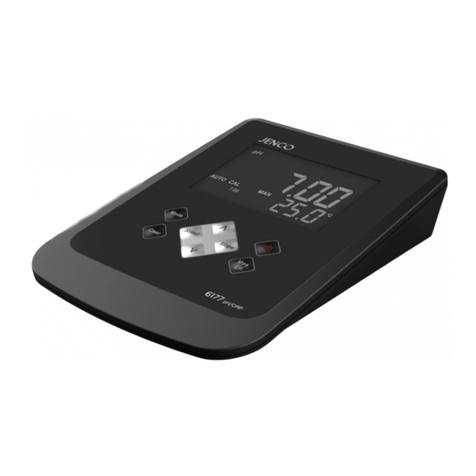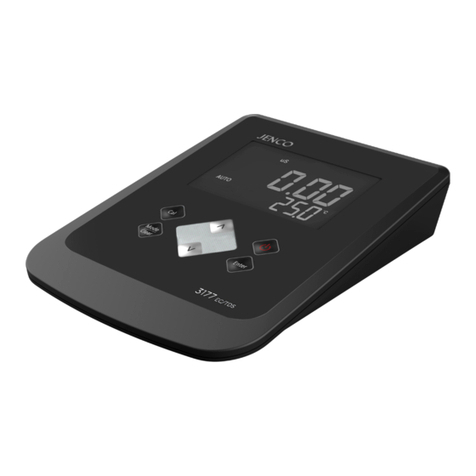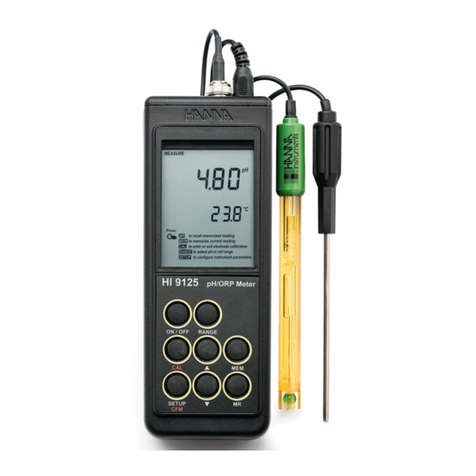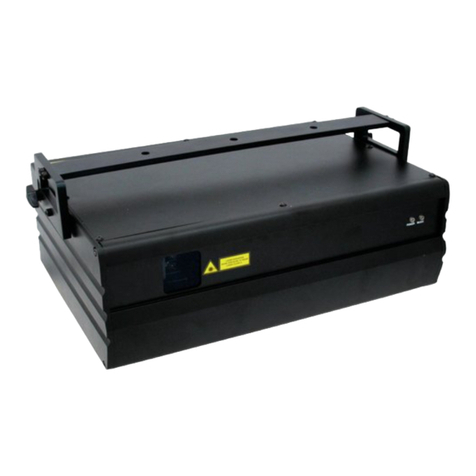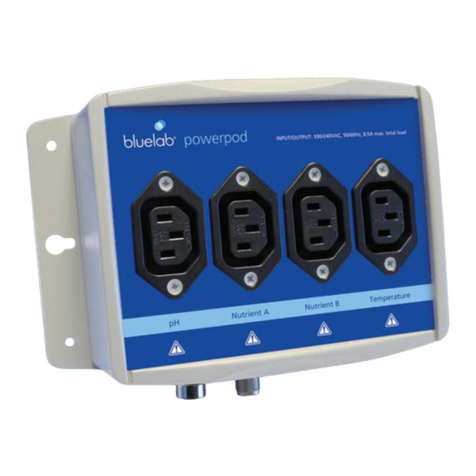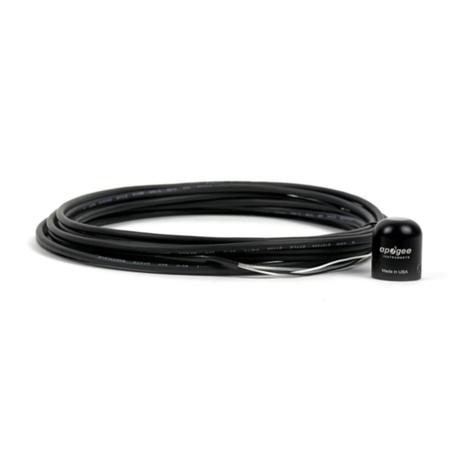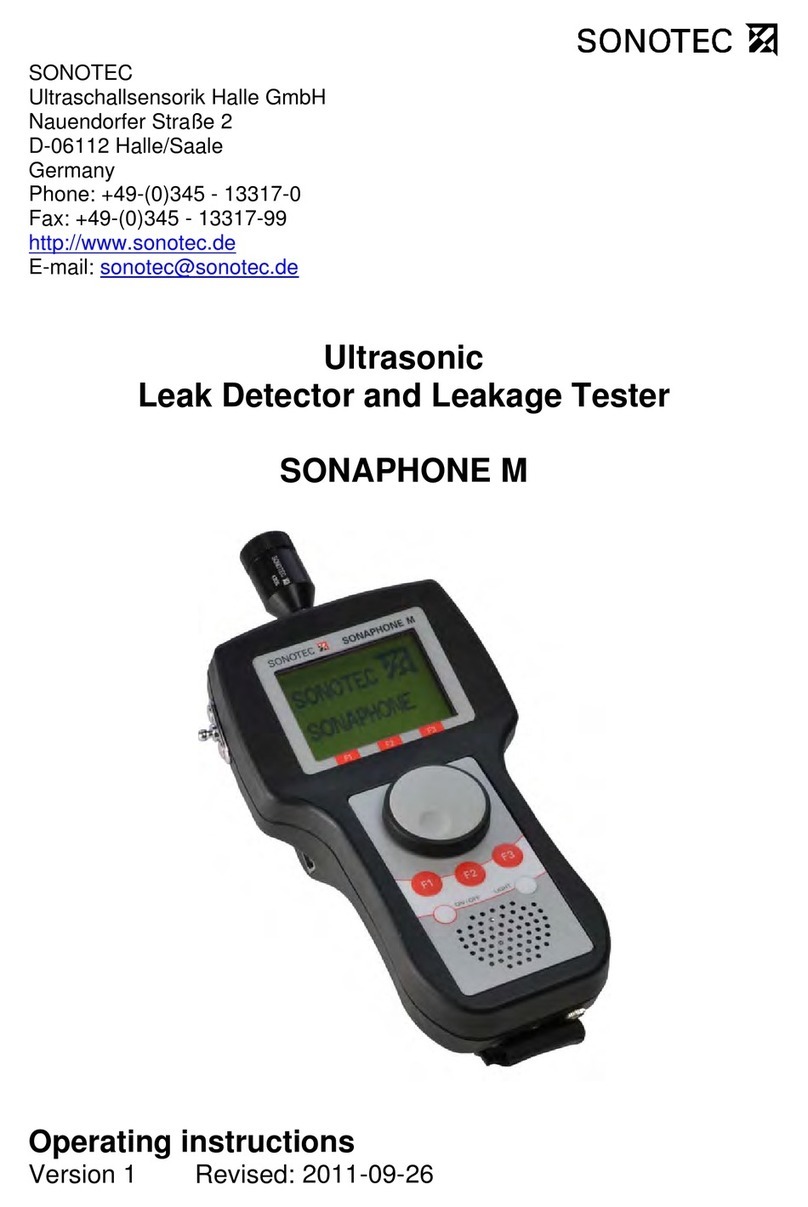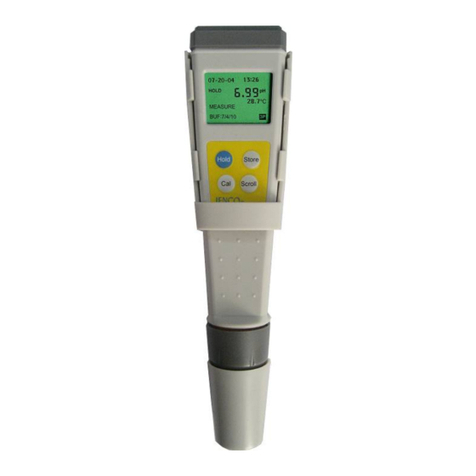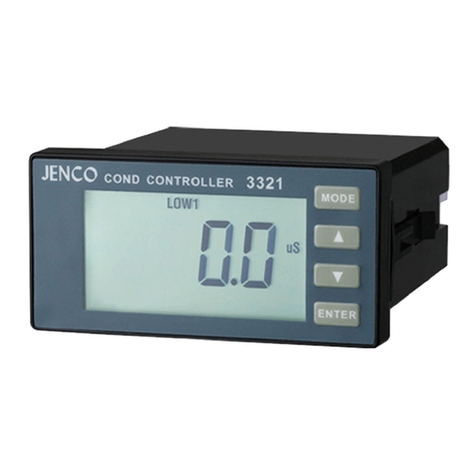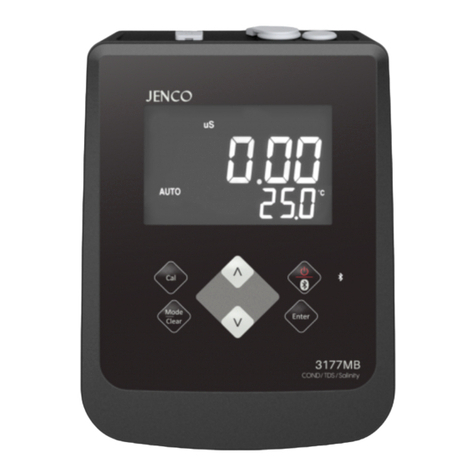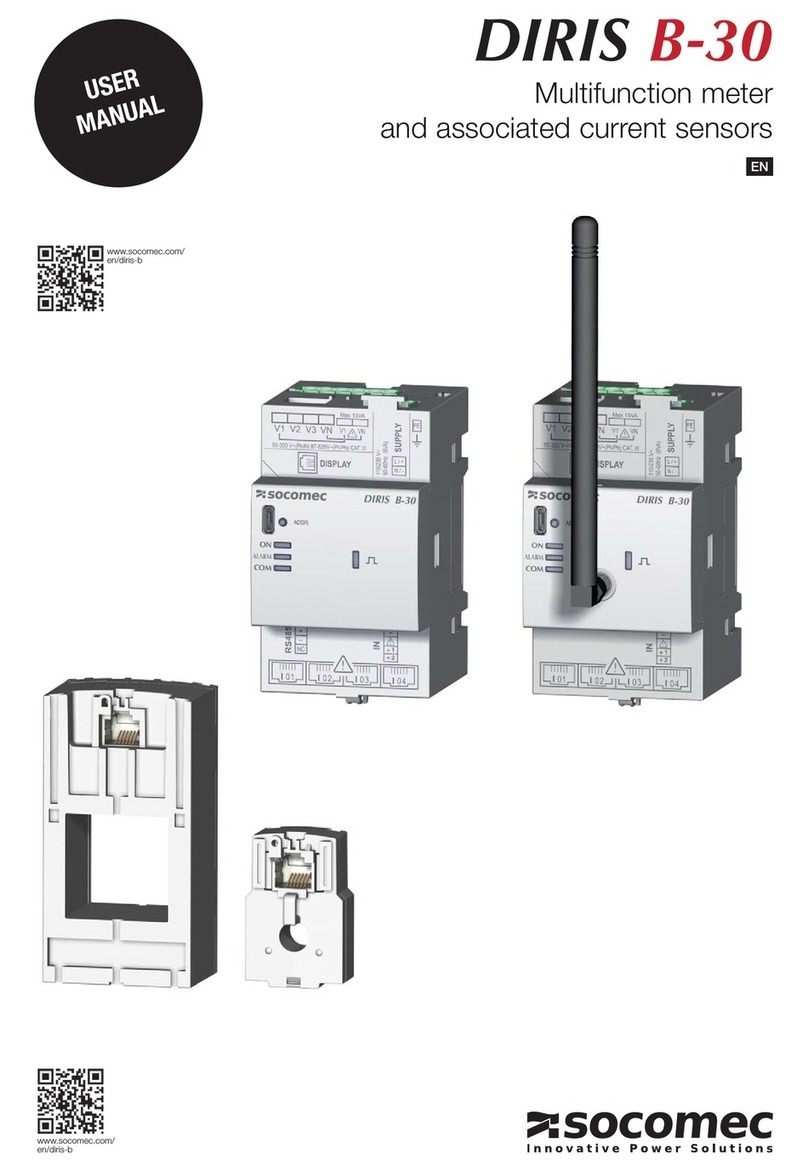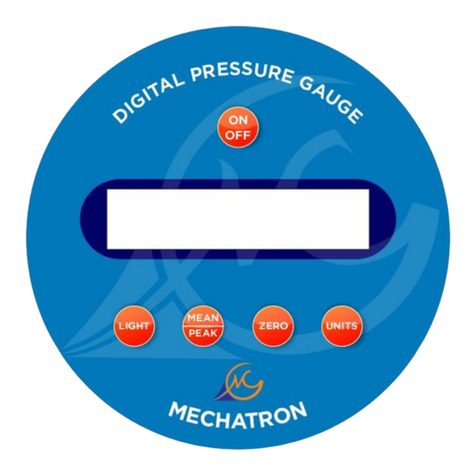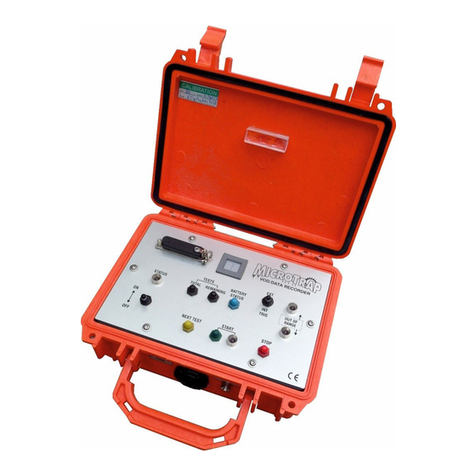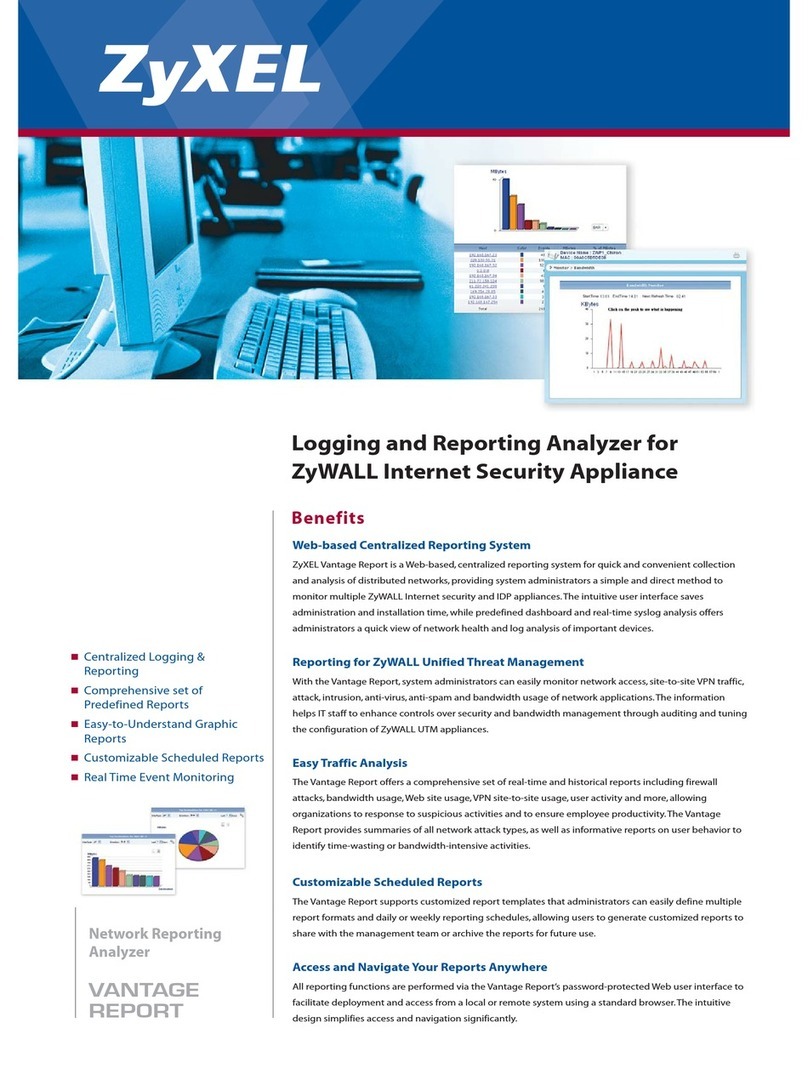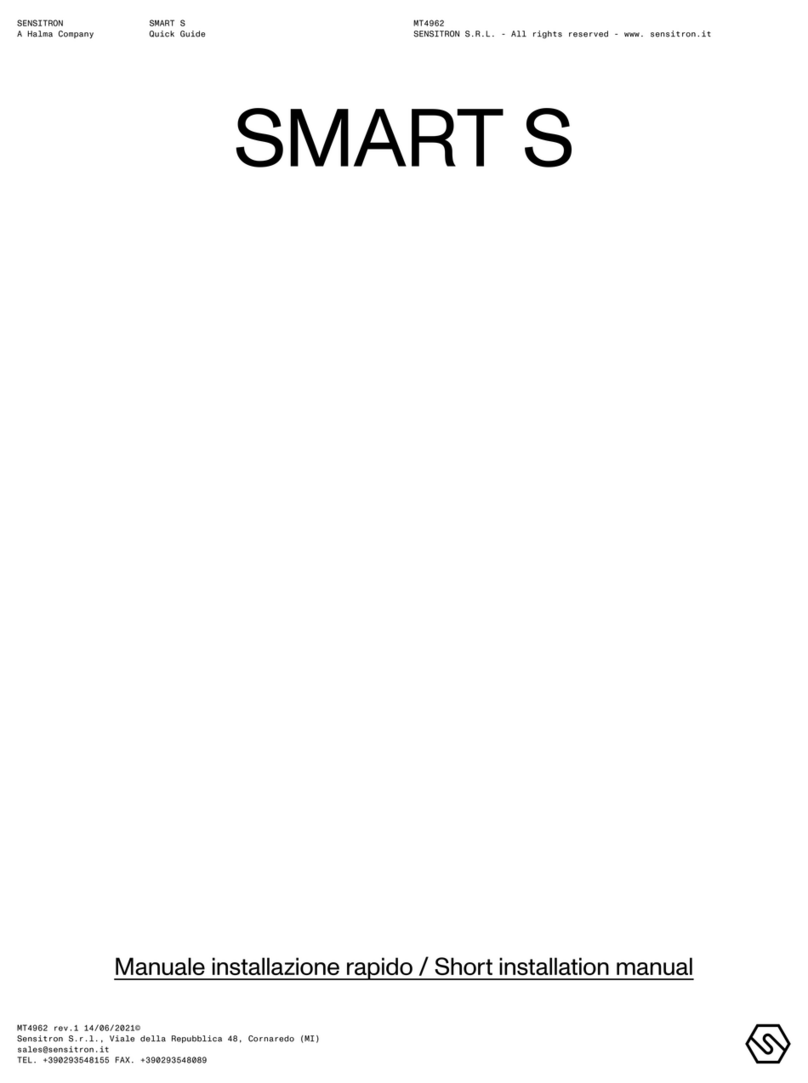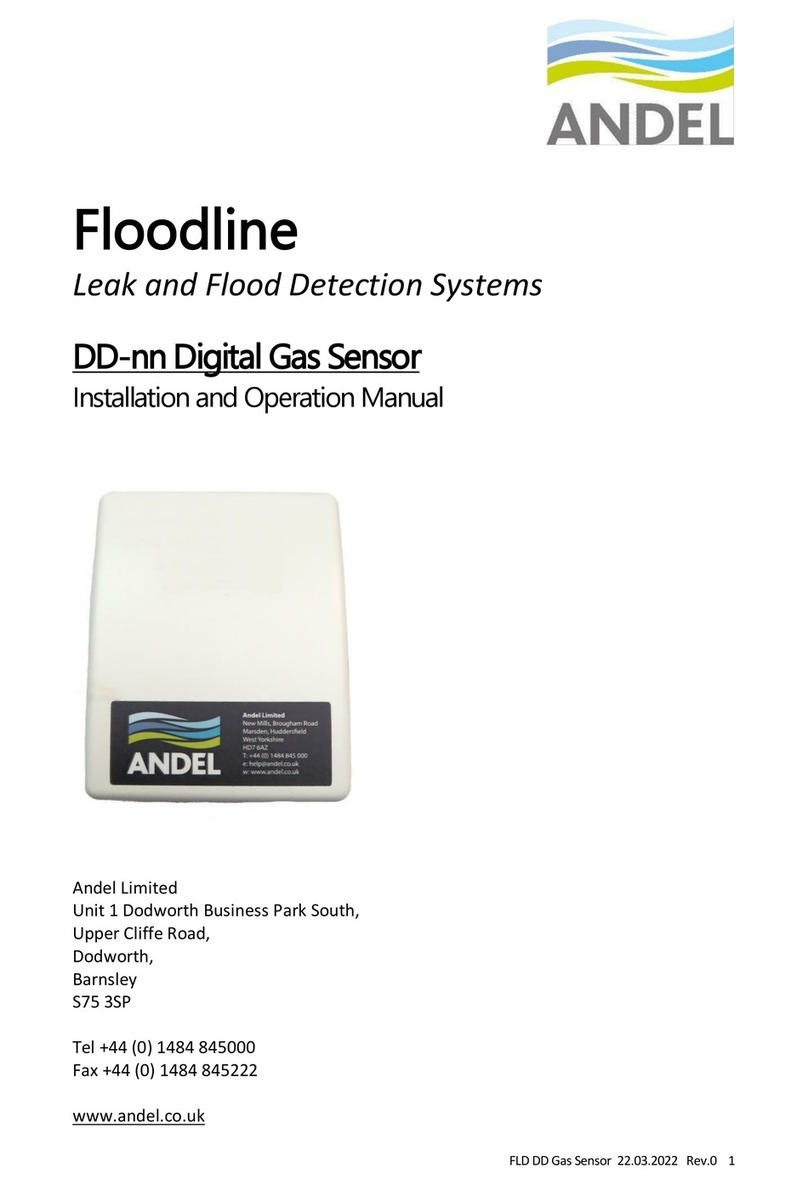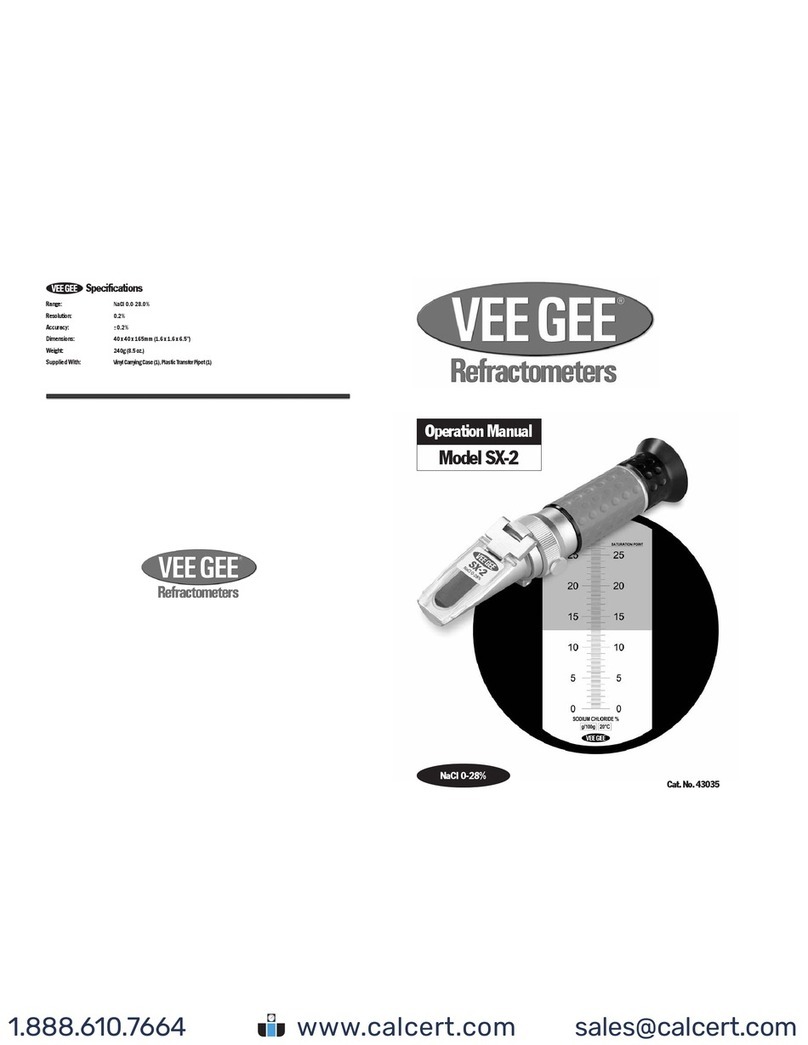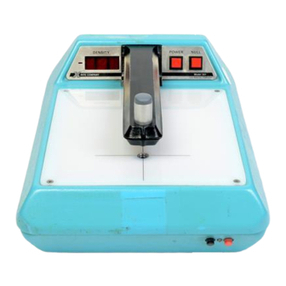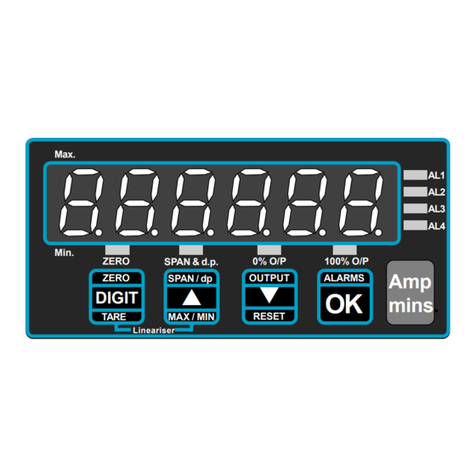
GENERAL INTRODUCTION
Thank you for selecting the 6179MB meter. The 6179MB is a
precision tool that measures pH, mV, ion concentration and
temperature. A built-in microprocessor stores, calculates and
compensates for all parameters related to pH determinations
including pH electrode temperature characteristics, electrode slope
deviations, offset and buffer solutions. The 6179MB is a 5th
generation pH/ORP/ION/temperature Bluetooth benchtop meter
with iOS and Android tablet connectivity.
This meter has a waterproof IP54 case. The mechanical keys are
highly reliable with tactile and audio feedback. It is powered by six
AAA-size alkaline batteries or with a UL/CE approved AC adapter
(OUTPUT:DC 9 V). The meter also displays a “BAT” message when
the batteries are in need of replacement. Re-calibration is not
required when power is restored.
The front of the meter has a large LCD that displays pH , mV , Rmv,
ion and temperature measurements along with user prompts and
mode indicators. The unit prompts the user through calibration and
measurement procedures.
An AUTOLOCK feature for pH, mV (RmV) and ion measurements
enables the unit to automatically sense the end point and “LOCK”
the display to indicate the end point value of a measurement.
AUTOLOCK and user prompts help eliminate most errors in
determining pH, mV (Rmv), ion values, resulting in precise,
repeatable and error-free measurements. The 6179MB can also be
used in non-AUTOLOCK mode.
The unit is also equipped with a non-volatile memory allowing the
user to store 750 different sets of readings. This unit will assign a
site number for each set of reading so the user can review the data
easily.
The model 6179MB is available with pH, ORP, ion and ATC
(Automatic Temperature Compensation) probes. Other features
include up to 5 point calibration for pH , 2 to 5 point calibration for
ion, 1 point calibration for ORP, electrode offset recognition,
electrode slope recognition, electrode efficiency display, built-in
buffer coefficients, automatic or manual temperature compensation
and 50/60 Hz AC noise rejection. This meter is user-friendly for
laboratory application.
INITIAL INSPECTION
Carefully unpack the unit and accessories. Inspect for damages
made in shipment. If any damage is found, notify your JENCO
representative immediately. All packing materials should be saved




















